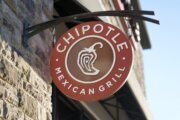The U.S. News Short List, separate from our overall rankings, is a regular series that magnifies individual data points in hopes of providing students and parents a way to find which undergraduate or graduate programs excel or have room to grow in specific areas. Be sure to explore The Short List: College, The Short List: Grad School and The Short List: Online Programs to find data that matters to you in your college or grad school search.
High school students with impressive GPAs and standardized test scores should be aware that those academic credentials may not be sufficient to get them into every college where they apply. That’s especially true at colleges where stratospheric grades and test scores are the norm and competition among many highly qualified applicants is fierce.
Some colleges are extraordinarily difficult to impress. Stanford University in California and Harvard University in Massachusetts are the two most selective undergraduate institutions, according to data submitted to U.S. News by 1,410 ranked colleges in an annual survey.
Stanford and Harvard admitted only 5% of applicants who sought entry in fall 2020, and the accepted students who enrolled at either school typically had impeccable academic credentials.
The median SAT score among incoming Stanford students who submitted results was 1500 out of 1600, and the median ACT score among those who submitted results was 34 out of 36.
Harvard did not report overall median SAT or ACT scores but did reveal information about average performance on standardized tests among incoming freshmen in 2020. The average SAT score on the reading and writing portion was 740 while the average math score was 760. The average composite ACT score among incoming freshmen who submitted ACT scores was 34.
Stanford and Harvard students also had great grades: 96% of Stanford freshmen and 94% of Harvard freshmen who submitted their high school class standing placed in the top 10% of their high school graduating class.
[READ: 6 Common College Admissions Myths.]
Stanford and Harvard aren’t the only schools that reject most of their applicants. The 11 colleges with the lowest acceptance rates, including ties, each admitted less than 9% of applicants.
Five of these schools are in the Ivy League, a network of East Coast colleges famous for selectivity and often regarded as a gateway into the upper crust of society. Still, many of the non-Ivy schools on this list are academic powerhouses in their own right.
Ten of the 11 colleges with the lowest acceptance rates are National Universities, schools that are often research-focused and offer a variety of undergraduate majors and a wide range of master’s and doctoral programs. The exception is one Regional College, a category that includes undergraduate-focused schools that grant fewer than half of their degrees in liberal arts disciplines.
Two schools on this list are based in California while two are located in Massachusetts. Connecticut, Illinois, Kentucky, New Jersey, New York, North Carolina and Rhode Island are each home to one school on the list.
[Read: 10 Colleges Where Early Applicants Have an Edge.]
Despite the low acceptance rates, it’s important to note that these schools are outliers, since most colleges admit a majority of applicants. The average acceptance rate among all ranked colleges that reported their admissions statistics to U.S. News was 70.1%, and 25 schools reported that they accepted 100% of applicants.
Students applying to the nation’s most selective colleges should not only demonstrate exceptional academic ability but also showcase their personality in college essays and display their initiative and leadership skills through extracurricular activities, experts say. They note that a student’s personal hobbies and projects are worthy of mention in a college application, as is any form of employment, since those details tend to humanize an applicant and can illustrate his or her uniqueness.
Below is a list of the 11 colleges that admitted the lowest proportion of their fall 2020 applicants. Unranked schools, which did not meet certain criteria required by U.S. News to be numerically ranked, were not considered for this report.
| School (state) | Fall 2020 acceptance rate | U.S. News rank and category |
| Harvard University (MA) | 5% | 2 (tie), National Universities |
| Stanford University (CA) | 5% | 6 (tie), National Universities |
| Columbia University (NY) | 6% | 2 (tie), National Universities |
| Princeton University (NJ) | 6% | 1, National Universities |
| Alice Lloyd College (KY) | 7% | 31 (tie), Regional Colleges (South) |
| California Institute of Technology | 7% | 9 (tie), National Universities |
| Massachusetts Institute of Technology | 7% | 2 (tie), National Universities |
| University of Chicago | 7% | 6 (tie), National Universities |
| Yale University (CT) | 7% | 5, National Universities |
| Brown University (RI) | 8% | 14 (tie), National Universities |
| Duke University (NC) | 8% | 9 (tie), National Universities |
Don’t see your school in the top 10? Access the U.S. News College Compass to find acceptance rates, complete rankings and much more. Sign up for the U.S. News Extra Help: College Admissions free email newsletter to receive expert advice twice a month.
U.S. News surveyed more than 1,850 colleges and universities for our 2021 survey of undergraduate programs. Schools self-reported myriad data regarding their academic programs and the makeup of their student body, among other areas, making U.S. News’ data the most accurate and detailed collection of college facts and figures of its kind. While U.S. News uses much of this survey data to rank schools for our annual Best Colleges rankings, the data can also be useful when examined on a smaller scale. U.S. News will now produce lists of data, separate from the overall rankings, meant to provide students and parents a means to find which schools excel, or have room to grow, in specific areas that are important to them. While the data comes from the schools themselves, these lists are not related to, and have no influence over, U.S. News’ rankings of Best Colleges, Best Graduate Schools or Best Online Programs. The admissions data above is correct as of Nov. 9, 2021.
More from U.S. News
How to Get Accepted to College Without a School Counselor
College Interview Questions to Prepare For
See the 10 Most Innovative National Universities
11 Colleges With the Lowest Acceptance Rates originally appeared on usnews.com
Update 11/09/21: This story has been updated with new information based on the U.S. News 2022 Best Colleges rankings.







